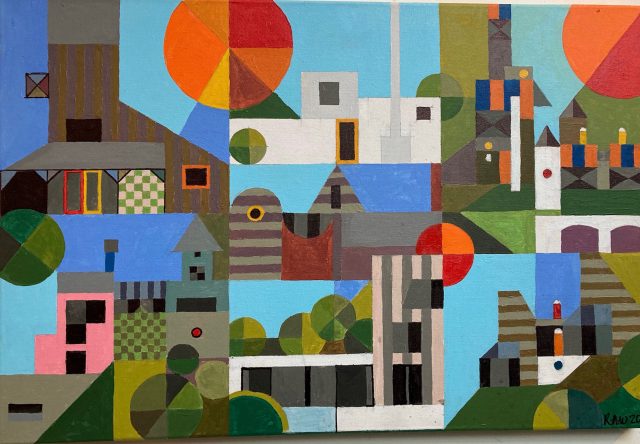Firmness, commodity and delight
I recently completed an academic essay for Curtin University in Australia, on the subject of ‘Delight in Architecture’. At 5000 words it is far too long for a blog, but long but here is a brief synopsis of what I wrote.
The essay had only a limited intention to articulate design principles or develop any theories of design. Any embellishment to my stories which may cause slight to a person or persons, living or dead, was unintentional.
Architecture follows the adage that ‘experience is a hard teacher. The test comes first and is then followed by the lesson’ People generally prefer beauty to ugliness and pleasure to pain.
I think ugliness can be avoided.
There are a few touchstones. Roman Artist Vitruvius who wrote at the turn of the millennium that ‘buildings should possess firmitas, utilitas and venustas‘ – firmness, commodity, and delight’
Delight references beauty, pleasure and surprise. It is understandable that Vitruvius’s third pillar is often missing. After all, achieving firmness is legislated (although some buildings fail this pillar). Utilitas comes from the nature of the project and the client. Delight, being so subjective is much harder to define and achieve.
Richard Buckminster Fuller spoke of this in the 1950s when he said: ‘When I am working on a problem I never think about beauty, but when I have finished, if the solution is not beautiful, then it is wrong.’
We are told by geographers that more people are living in urban environments, than rural, for the first time in history. In New Zealand, our Government has recognised the unsustainable folly of sprawl and are moving toward tightening up our built environments. The unimaginative fearful are saying this will ruin our suburbs. Nonsense. A city is a library of buildings. All sizes and styles. This produces a rich built environment. By ‘personalising’ buildings, surprise and joy can arise.
Standardisation tends to be joyless. The best examples of beautiful individual and clusters of heritage buildings should be protected, just like old books in a library. But there is plenty of scope for ‘new heritage’.
I have a story about a woman who visited our office a few years ago. She had heard we designed houses. After about 10 minutes silently looking closely at our brag walls and our photo albums she finally said, ‘Mr.Walker, do you design anything normal?’ An interesting encounter, not because she didn’t like our houses, but her concern about being ‘different’. This fear of being different intrigues me. We are not a nation of sheep are we?
People are attracted to and visit within our world to see and marvel at different buildings. The Taj Mahal, the Guggenheim in Bilbao, Frank Lloyd Wright’s Houses, and the Empire State building, for example. The glass domed German Parliament building in Berlin, known as The Reichstag, has more visitors annually than the whole of New Zealand.
We need not fear colour. Why seas of grey roofs in suburbia? Acousticians like beautiful sounding interiors. ‘Agreeable not discordant‘ wrote Sir Harold Marshall .
Billy Connolly, the Scottish comedian,or storyteller, as he would prefer to be called, spoke frequently about how we know nature is beautiful. The mountains, the coastlines, the trees and the lakes.
‘What I am most interested in is how we humans add, rather than detract from this beauty’, he says. He appeared in his ‘World Tour’ series atop the Opera House in Sydney and the Forth Bridge in Glasgow to make his point.
I thoroughly embrace the concept of expressive architecture. Without delight, we risk depression and alienation.
It’s our job as architects to understand what Vitruvius said.

